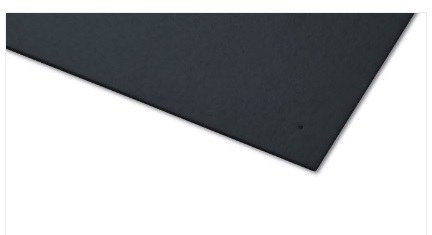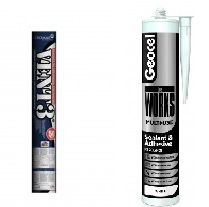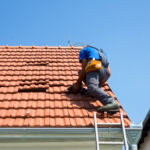It isn’t always obvious when you’re developing a problem with your roof, let alone the source of a leak, but there are a few things to watch. Pay attention to any debris you find in your garden - chunks of metal or mortar flashing, pieces of roofing material (slate, tile, asphalt shingles), plastic or metal guttering supports.
Visual Check
A visual check of the roof from street level is often difficult but you can also check it from inside. Any blistering of paint and plaster near the top floor ceiling is water damage, but identifying where the water is coming in is another matter - it can travel a long way before penetrating, and drips can be equally misleading. Try having someone spray the roof with a hose whilst you look for wetness inside the loft, or look for staining that may show a route taken by water. An even simpler check is to turn lights off and look for daylight. Not every gap is a problem, but missing flashing or tiles can become obvious.
Who Is Responsible
Next consider where the responsibility for the repair lies. For tenants, by law it lies with the landlord. If it’s covered by home insurance, you should begin by consulting the insurance company. If the roof was only recently renovated it could be covered by builders guarantees. If the responsibility lies with you, consider the difficulties and costs of tackling it yourself or hiring assistance. Almost no roofing repairs can be conducted from underneath, but if you have a head for heights and the necessary safety equipment (such as roof ladder and safety harness) some repairs are simple.

Roofs can be made of many materials, from metal to straw, but most are ceramic tiles, asphalt shingles or slate. Most are fairly cheap in themselves, for example slates are about a £1 each. Problems arise if these are cracked, slipped, missing or lifted by winds. Where the roof intersects with brickwork there will be lead, metal or mortar flashing, and this too can leak or fall off. Where the roof is penetrated by flues there will be a footing often made of metal, rubber seals and plastic parts that all deteriorate with time. If a TV aerial or satellite dish has been removed, screw holes may have been left.

With the exception of complicated corners and edges (e.g around chimney stacks) where installing flashing can require experience, most small points of leakage and damage are fairly easy to repair. Whoever goes up to fix it should make a list of all the jobs that need doing so they can be fixed at the same time. Look for any missing vent or soffit coverings, insecure chimney pots, caps or birdguards , and any buckled guttering holding standing water.
Carrying Out Repairs
Most cracks and holes are fixed by loosening enough nails in surrounding tiles so you can get a new matching tile underneath. If using a slate ripper to pull old nails be sure to use it sideways - the direction of the battens underneath. A single new tile can be secured with good quality roofing cement like “The Works” wet and dry sealant and adhesive. If you use galvanized nails you can also use this to seal the heads. If your roof uses asphalt shingles it is good for sticking down peeling edges too.

If there are many such problems your roof may be nearing the end of its serviceable life and it’s worth considering investing in a new roof. More modern materials may even improve the insulation of the house (e.g. see https://www.jtatkinson.co.uk/roofing/roofing-membranes.html) so if you plan to be there for a good while that’s an added incentive.

